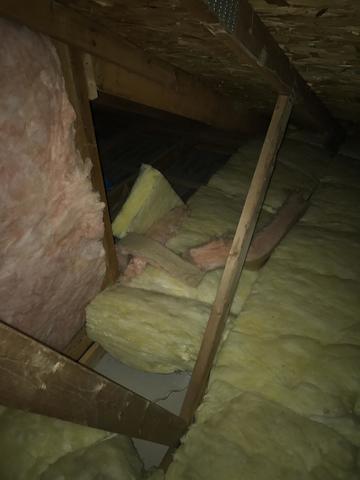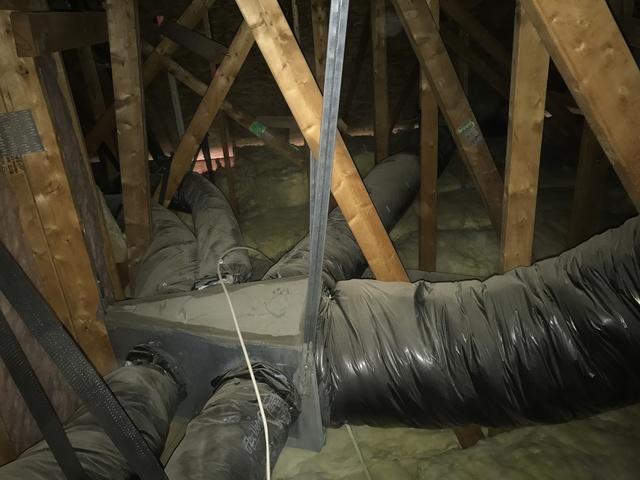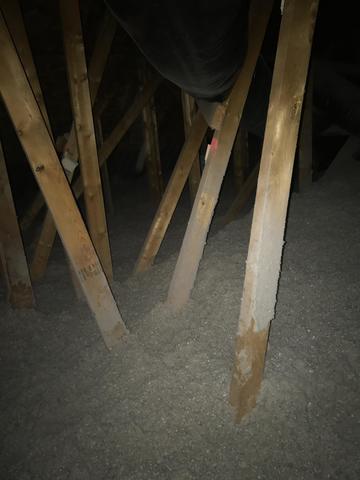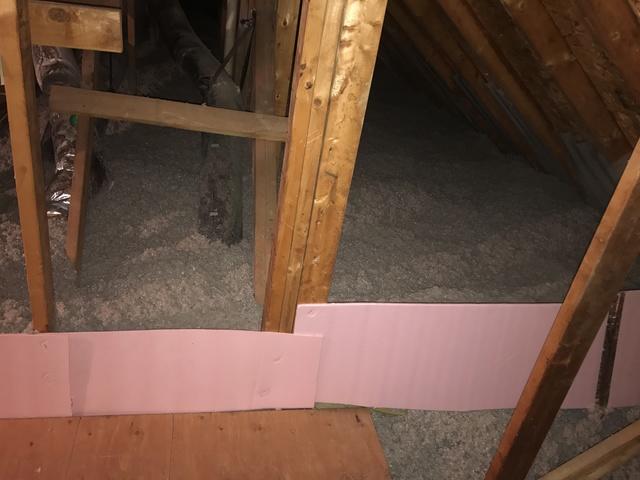
Underinsulated Attic
This attic already had R-30 fiberglass insulation batts. But they weren't enough because fiberglass actually traps air inside of it rather than stopping all air and heat movement like cellulose.

Voids
Insulation Voids can be some of the leakiest spots of the home and you can usually tell that that area is much more uncomfortable below,

Attic Sill Plate
A close up of the top of a wall called the sill plate. This is a major contributor to air leakage all around the home.

Sill Plate
The top of every wall has a similar sill plate which has a large gap around it and also has a lot of wire and pipe penetrations. All of these openings need to be sealed to properly insulate the attic.

Uninsulated Supply Duct
This 'cheese wedge' supply duct is constantly exposed to whatever temperature the attic is, making the duct system work less effectively.

Sealed Duct
Now the supply duct is completely encapsulated and protected from the extreme temperatures in the attic.

Cellulose Insulation
Now the attic is insulated more heavily with cellulose insulation, which makes the older fiberglass below it work even better.

Insulation Retaining Dam
This pink board is separating the footprint of the inside of the home from the garage area. You do not need to insulate over a garage in most homes and it can trap airborne VOC's.

Defined Walkway
A defined walkway to the HVAC unit that has been properly sealed and insulated around it.

